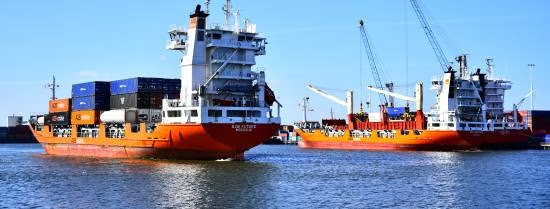Inland ports: what is the impact of COVID-19 on the economic significance in 2020? The Dutch inland ports are hubs in the regional economy. In recent years, the economy has been prospering; there were strong growth figures for the entire economy and the transported volumes also showed an increasing trend. Until 2020, when the COVID-19 crisis showed a short-term but severe break in this upward trend. The port of Rotterdam reported a 6.9% decrease in throughput in 2020. The port of Amsterdam even reported a 14% lower throughput in 2020 as a result of corona and the energy transition. As an important source and destination of goods, the ports of Rotterdam and Amsterdam are of great importance for (some of) the inland ports in the Netherlands. But in addition to the connection with these ports, there are also other possible ways in which COVID-19 could have had an impact on Dutch inland ports. In addition to the effect on transshipment, is there also an effect on other economic indicators such as employment and added value of the inland ports themselves? This was researched by the Erasmus Center for Urban, Port and Transport Economics (Erasmus UPT) on behalf of the Ministry of Infrastructure and Water Management (IenW) and in close collaboration with the Dutch Association of Inland Ports (NVB) in the Inland port Monitor 2021. The previous version of the Inland port Monitor was completed about the year 2018; how did the Dutch inland ports develop since then?
The 2021 Inland Port Monitor provides insight into the added value and employment of inland ports in the Netherlands for the year 2020. This monitor for 2020 shows that the direct added value of inland ports in the Netherlands amounts to 7.3 billion euros. If indirect added value is included in this, there is a total added value of 12.1 billion euros. Direct employment in the Dutch inland ports has been calculated at 63.3 thousand employed persons in 2020. Compared to 2018, employment has decreased slightly. Direct added value decreased by approximately EUR 381 million to EUR 7.3 billion in this period; the total direct + indirect added value decreased somewhat more from 12.8 billion euros to 12.1 billion euros. It can therefore be concluded that the direct economic value of the Dutch inland ports as a whole has decreased slightly in 2020. The Inland port monitor 2021 is now available The full report Binnenhavenmonitor 2021 can now be downloaded here and at the bottom of this news message.
Methodology developments and points for attention
A number of developments and points for attention can be seen in 2020. The breakdown between the ten types of inland ports and the sea ports makes it possible to compare different types of inland ports and to distinguish the contribution to the total. The largest contribution is made by the industrial ports, followed by inland shipping in sea ports and the sand and gravel ports. The industrial ports employ more than 11 thousand people, who jointly realize a direct added value of 1.3 billion euros. Inland shipping in seaports contributes about 15% to the total added value. The sand and gravel ports employ approximately 7.4 thousand people, who jointly realize a direct added value of 944 million euros. The Inland port monitor 2021 was drawn up in collaboration with Central Bureau of Statistics Netherlands, using various source files from CBS. The second point of attention is that the typological demarcation of the inland ports in the Netherlands and the determination of which inland port falls into which type of category has been critically examined by the researchers involved, the Ministry of Infrastructure and the NVB. This classification may be subject to change over time and will therefore remain an important point of attention for the next monitor.
Would like to know more?
 Martijn Streng
Martijn StrengProject leader Inland port monitor

